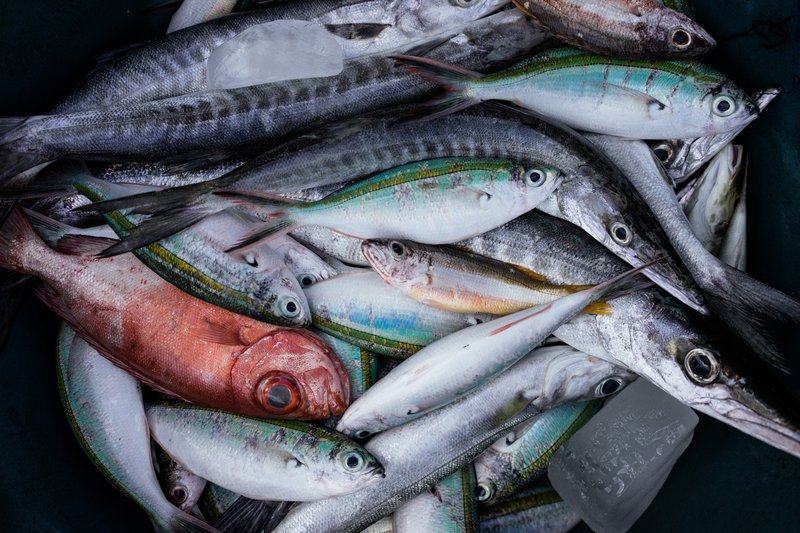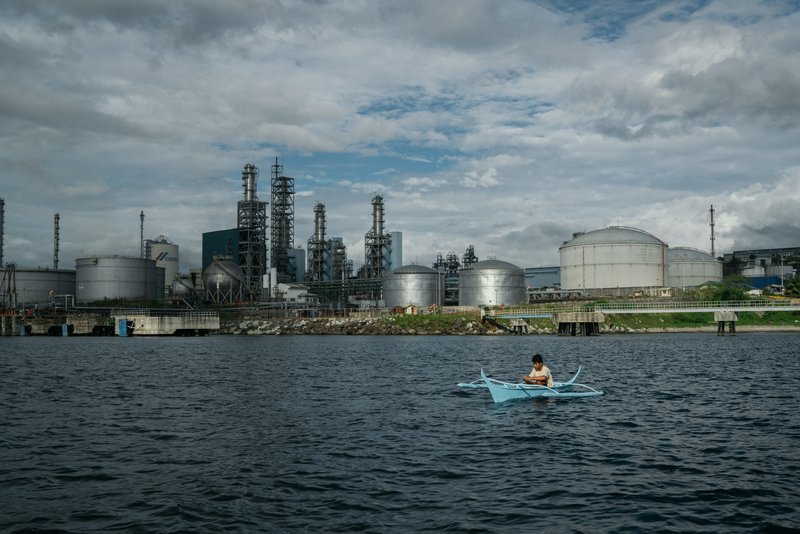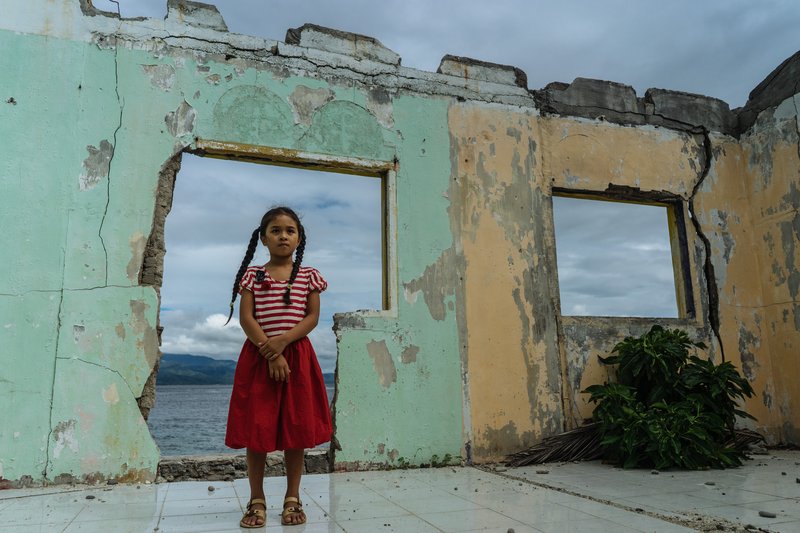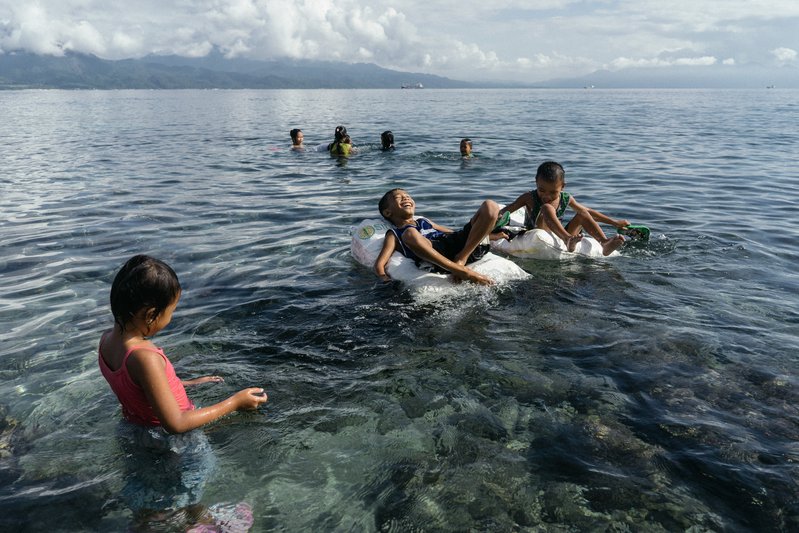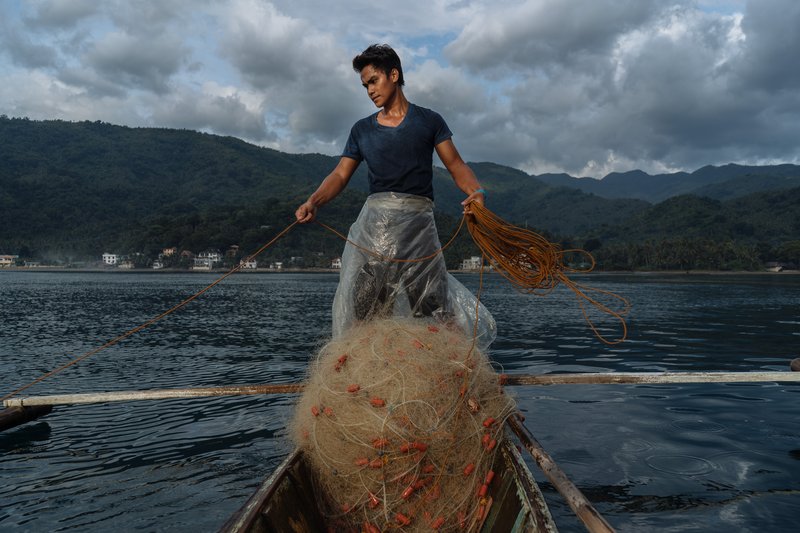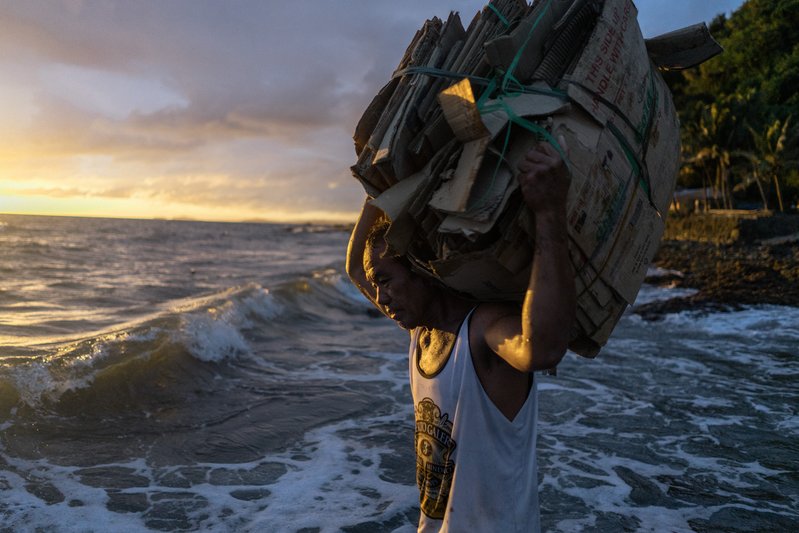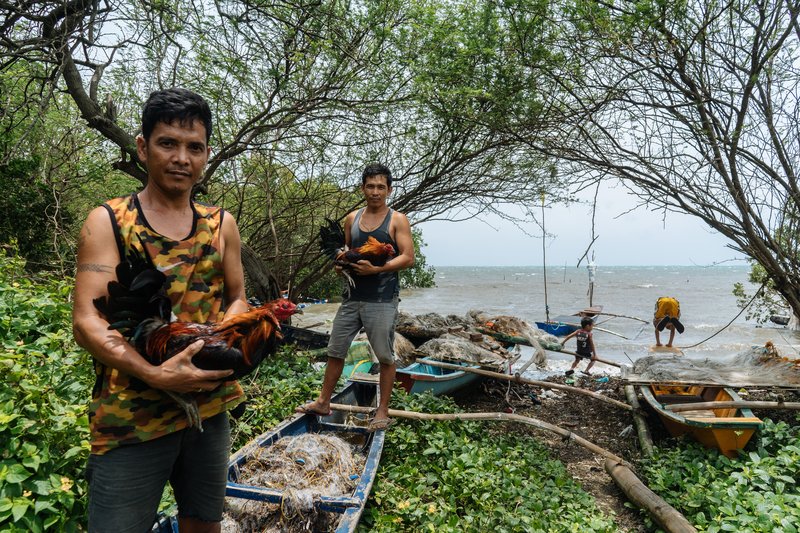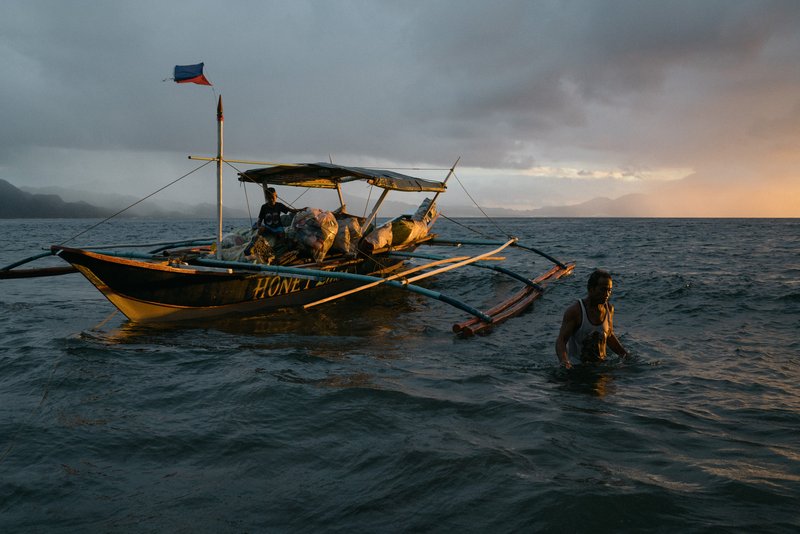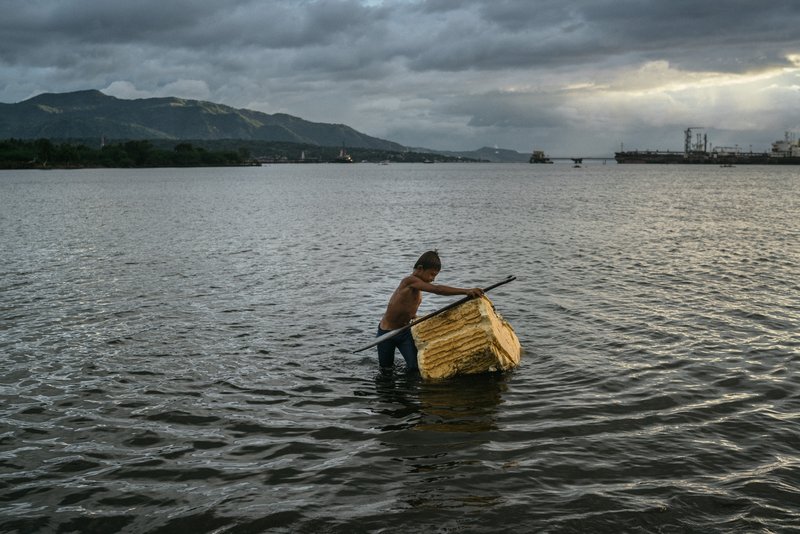Documentary Practice & Photojournalism: Hannah Reyes Morales
See a selection of images from Hannah Reyes Morales.
Caption
Slide 40 of 165
Cities Made of Water
December 5, 2017
A Badjao boy plays with a wooden paddle and a styrofoam cooler, his makeshift boat, in Wawa, Batangas. The more industrial towns of Batangas can be seen in the background, along with a commercial barge being serviced at a pier. What is not visible in the background is the island that used to sit in the middle of this bay, where these Badjao families originally settled before it was swallowed up by a typhoon a few years ago, forcing them to relocate once more. Disparagingly labelled as "sea gypsies," Badjao follow the movements of the sea rather than the borders of the land, never quite belonging to the countries in which they live. Many Badjao families like this boy's settled in Wawa, a mixed community of Badjao and Tagalog peoples, after fleeing from the fighting in Mindanao and heading north, begging and working their way from island to island. The Badjao here have been Christianised and want to be referred to as "Goodjao," to escape the prejudice and marginalization their ethnicity has historically been subjected to in Southeast Asia. With the Philippines the third most vulnerable country to climate change, fisherfolk, who are the least responsible for causing the worsening climate crisis, are also the population most vulnerable to its disastrous consequences such as rising sea levels, storm surges, and coastline erosion.
Hannah Reyes Morales
See more at MediaStorm

